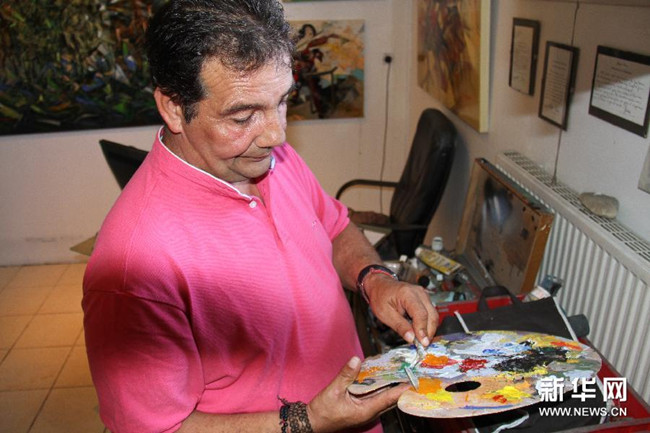 |
|
Christian sets to work since this January. [Photo/Xinhua] |
The painter felt that other depictions of the massacre, particularly among his Chinese peers, had been too reserved, often showing the dead, but in manners that were sober and aloof. The French painter decided a different perspective was needed. He decided to show the people of Nanjing being killed, instead of already dead.
"I am a French artist having studied discursive knowledge through the study of reasoning. Regarding a scene of massacre, my characters wear many emotions, such as pain, fear, anguish, horror and terror," he continued.
The painting he created was full of dark, turbulent, and fragmented images portraying dozens of scenes from the massacre. On the canvas, viewers see Japanese soldiers killing civilians for sport and amusement, while solitary children look on in fear after having lost their families.
"With my painting, I think one sees the scenes, one sees the pain, all the feelings of fear, hate, and anguish," Poirot explained.
The artist discovered his own limits, however, finding that he could not depict some of the more brutal acts recorded in histories of the massacre. Instead, he painted doves flying up from those being killed, as a sign of peace and life, even as the victims lost their bodies.
"It's as if they are saying, you can take my body, but never my soul!" he declared.